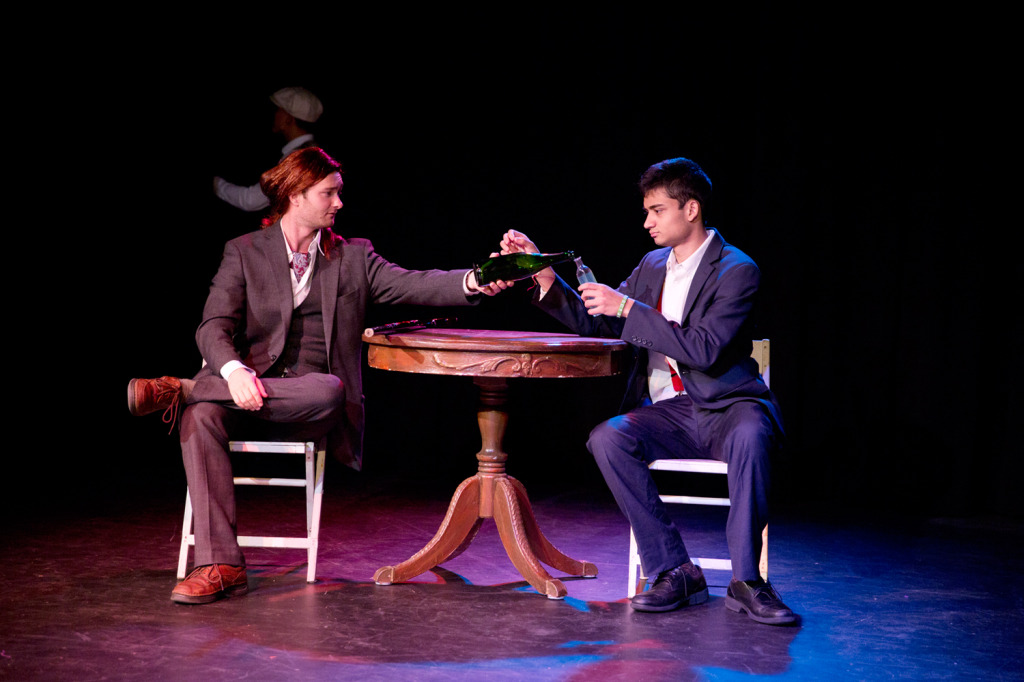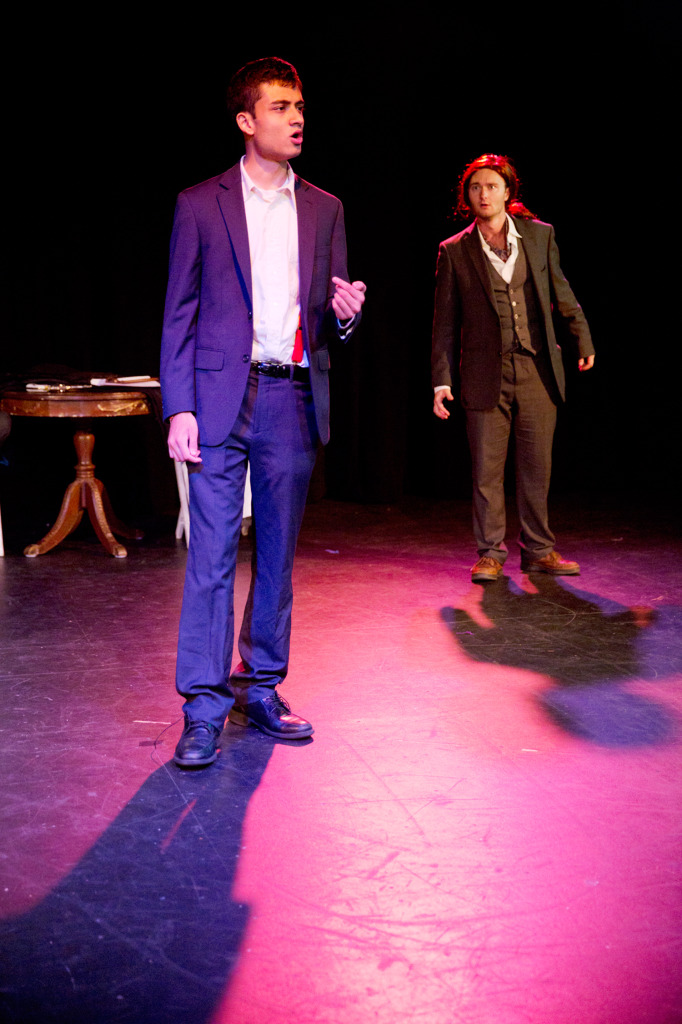A new undergraduate production will take audiences to the depths of London’s secret anarchist societies while exploring philosophical questions of life and religion.
“The Man Who Was Thursday” opens tomorrow night at the Morse-Stiles Crescent Theater. Set in Edwardian-era England, the play is an adaptation of British author G.K. Chesterton’s novel of the same name. Alexi Sargeant ’15, who wrote the adaptation and is directing the production, said the play reminds him of several well-known authors’ writing styles, adding that a common theme among works by Chesterton is the relationship between hope and despair.
“It’s as if it were an Alfred Hitchcock film co-written by Oscar Wilde and John Milton,” Sargeant said.
The storyline centers on a poet named Gabriel Syme who is recruited by Scotland Yard — London’s police force — to infiltrate a secret society of anarchists with anti-establishment intentions. Syme’s codename, Thursday, gives the play its title. What begins as an outrageous tale of intrigue and adventure, develops into a commentary on the purpose of suffering and the meaning of life, Sargeant said.
Cast and crew members each emphasized a different theme in the play when describing the show’s most prominent characteristics. Eliza Stein ’18, who plays Dr. Bull in the play, highlighted the world domination plot by anarchists in the play, while Sargeant focused on the work’s blending of whimsical humor with serious philosophical issues, such as the role of God.
Several ensemble members said they believe that the transition from adventure to philosophy was one of the play’s most defining characteristics. Costume designer Isadora Milanez ’18 said this transition is reflected in the way she designed the clothing for the show.
“What starts off with men in suits turns into a masquerade,” Milanez said, adding that the work of the French painter René Magritte had a large influence on the artistic design of the show.
Sargeant said the plot of the novel includes a number of elaborate chase scenes, which posed a challenge when adapting the book into a play. He added that he was able to bring these scenes to the stage by following in the steps of English playwright Patrick Barlow’s 2005 play adaptation of Alfred Hitchcock’s 1935 film “The 39 Steps.” Both plays use a small cast to create the illusion of headlong chase scenes, Sargeant noted. Sophia Eller ’17, who plays the show’s central villain Sunday, said the cast must create the effect of a car chase, a crowded bus and a foot chase throughout London. She explained that the ensemble will move around the stage to create the effect of Syme’s pursuit through London alleyways and byways.
There will also be several swordfight scenes in the show, Sargeant said, adding that explosive effects may also make an appearance. He noted that the show had cleared out the undergraduate production’s weapons inventory.
Tomorrow’s premiere of “The Man Who Was Thursday” is the culmination of years of work on Sargeant’s part. After reading the book in his senior year of high school, Sargeant began the process of theatrical adaptation. The process, he said, involved reading drafts of the play at various dramatic organizations, including the ShakesPEER group in Philadelphia, the American Shakespeare Center’s Young Company Theater Camp and a talent show hosted by the Shakespeare Academy in Stratford, Conn. Sargeant added that he made slight alterations to the script throughout the rehearsal process, noting that several of these changes were made after actors made impulsive interjections while saying their lines during rehearsal.
“The Man Who Was Thursday” was first published in 1908.









